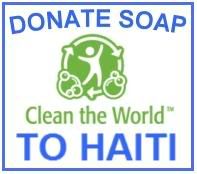The laws surrounding soap labeling can be confusing. Soap can fall into three catagories 1) soap 2) cosmetic 3) drug
The United States Food and Drug Administration defines soap as
• The bulk of the nonvolatile matter in the product consists of an alkali salt of fatty acids and the product's detergent properties are due to the alkali-fatty acid compounds, and
• The product is labeled, sold, and represented solely as soap [21 CFR 701.20].
(Source: US Food and Drug Administration)
If a soap makes no other claims than its intended purpose, as a cleanser, then the soap is not a cosmetic under FDA guidelines and is not subject to cosmetic labeling laws.
Let’s say a manufacturer makes claims that a soap is moisturizing. Then the soap is regulated as a cosmetic and is subject to cosmetic labeling laws. It would have to be labeled with ingredients listed in International Nomenclature of Cosmetic Ingredients format (aka INCI). INCI is a system of naming cosmetic ingredients based on scientific names and other Latin and English words.
If a manufacturer makes claims that their soap will cure, prevent or treat disease (e.g. a soap that claims it treats eczema), then that soap is regulated as a drug.
If a soap is made of detergent(s), the FDA no longer classifies the product as soap, but rather as a cosmetic. Most “melt and pour” soaps would fall into this category. Cosmetic labeling laws would apply.
To avoid confusion, many handmade soapmakers list the ingredients in their soaps. It allows consumers to know exactly what is in their soap.
Wednesday, October 21, 2009
Subscribe to:
Posts (Atom)










